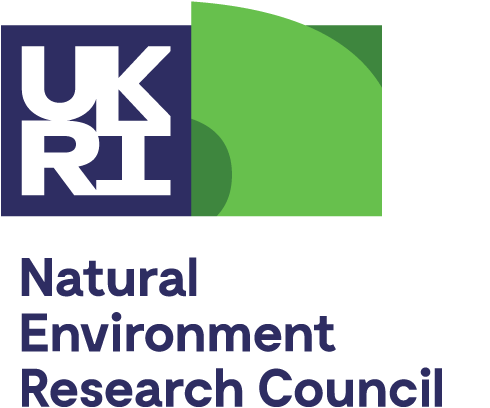About the project
The SoS RARE project is a consortium project funded by NERC and EPSRC under the Security of Supply of Mineral Resources (SoS Minerals) science programme, running from 2015 to 2019. The research team includes 17 investigators from six UK universities and research institutes, with ten industry partners and eight core international research collaborators. The project developed from two NERC-funded catalyst grants, GEM-CREE and MM-FREE.
The project aims to improve understanding of how the rare earth elements (REE) are concentrated in natural systems, and use this information to investigate more efficient and environmentally friendly ways to extract and recover the REE. It is divided into two strands: the first concentrates on conventional bedrock deposits of the REE whilst the second focuses on ion adsorption clay deposits.
The diagram below shows the structure of the project; click on the boxes for more information about the different work packages and methodologies.
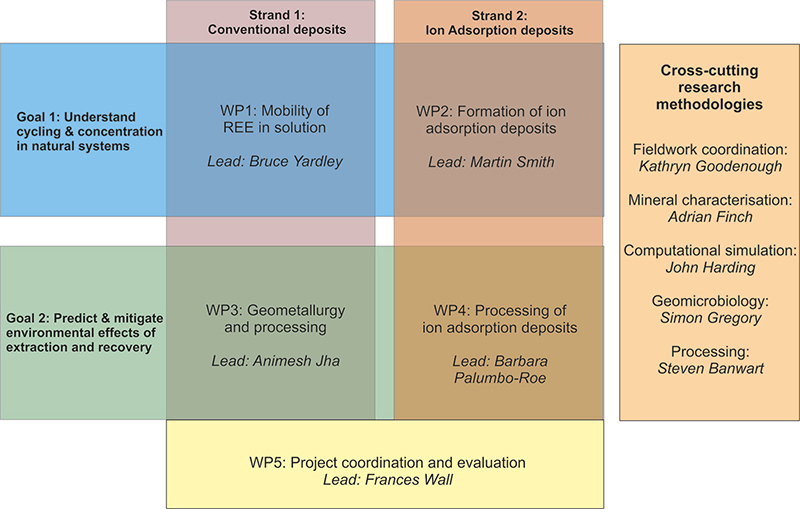
WP1
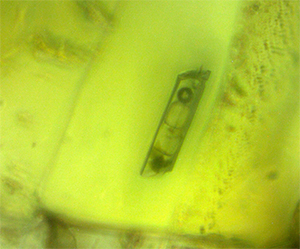
This part of the project aims to understand which factors can make the REE dissolve into natural waters and which factors cause them to precipitate out as minerals. These are the processes that underpin the formation of most ore deposits. Developing an understanding of these processes involves several approaches. Firstly, we need to find out what sort of waters are able to move these elements in nature by the study of natural systems, in particular by investigating fluid inclusions in rocks rich in the REE. Secondly, we need to investigate which particular aspects of these waters make them particularly effective at moving the REE. We will achieve this through a combination of laboratory experiments under simulated natural conditions, and theoretical computer models of how these elements interact with other types of atoms in solution and how they form minerals.
WP2
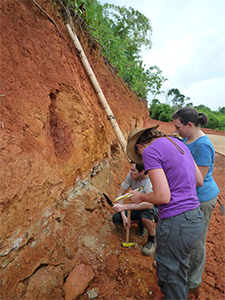
The majority of the world’s known REE resources are concentrated in bedrock mineral deposits, which are commonly richest in the light REE, whilst there is significant economic demand for the heavy REE (HREE). Most HREE are currently produced from tropically weathered rock profiles in China, where the REE are assumed to be adsorbed onto clay mineral surfaces. This ‘ion adsorption clay’ deposit type has the advantage of being easily leachable and thus having relatively low processing costs, as well as potentially lower environmental impact. WP2 is working to investigate the characteristics of this deposit type, particularly focusing on a deposit in Madagascar, in order to further understand the properties and formation of these deposits. This information will help improve detection of deposits of this type, and improve processing and extraction techniques. As well as working on the field sites, the team will also be carrying out experiments on the adsorption of the REE on to clay minerals, and laboratory simulations of REE transport processes during the formation of the deposits.
WP3
The aim of WP3 is to develop novel processing approaches for rare earth minerals in conventional deposits (especially xenotime, monazite and fluorcarbonate ores), establishing relationships between the fundamental mineralogy and processing features. Processing techniques include alkali roasting of these minerals, flotation, and luminescence studies. A second objective of the research focuses on the selective separation of the individual rare earth elements by electro-deposition in non-aqueous media using deep eutectic solvents or ionic liquids. Computational simulations will be used to address fundamental thermodynamic properties required to expand the scientific knowledge in this area as well as to design industrial processes.
WP4
WP4 deals with the recovery of REE (especially HREE) from low-grade ion-adsorption clay type ore deposits. These REE deposits are relatively easy to mine by ion-exchange leaching technologies using batch or heap leaching procedures (typically with sodium chloride and ammonium sulphate). Recently in-situ mining has become an attractive alternative to surface mining. Despite the straightforward REE recovery, the intense and unregulated mining in areas of China has led to reported severe environmental impacts, including deforestation and contamination of soil and water receptors. As new ion-adsorption clay REE deposits are being explored worldwide, research is needed to optimise recovery and inform risk assessment and waste management practices. WP4's goal is to identify which organic and inorganic ligands and chemical and biological processes are capable of remobilising and fractionating the REE in ion-adsorption clay REE deposits and incorporate this information into process models that will contribute to flow sheets for ore processing, reducing the energy demand and environmental impact of REE mining.
WP5
WP5 will bring together the results from the other four work packages to determine how the economics and environmental impacts of the different varieties of REE deposits affect their responsible sourcing and future development. An expert 'think tank' comprising industry partners, including SRK Ltd, project members and collaborators will be set up later in the project. The plan is to consider four questions, which will be updated and refined in the second part of the project.
- Is there scope for economic and environmentally acceptable production from easily leachable deposits (i.e. similar to Chinese HREE ion adsorption clays).
- How big a barrier is the presence of actinides? Which processes hold most promise for actinide removal, especially for HREE deposits?
- How likely it is that companies will be able to produce the much more valuable separated REE products at the mine site, and what are the environmental and economic implications of these choices?
- How important will the environmental impact of producing the various types of REE ores be in determining economic potential (e.g. energy for mining and processing, potential as/for by products, scope for land rehabilitation versus long term environmental effects and pollution risk)?
Fieldwork coordination
In order to work on natural systems, the SoS RARE team is carrying out fieldwork on REE deposits around the world. For strand 1, on conventional deposits, field locations include carbonatites in Malawi, Namibia and China. Fieldwork is also being carried out in the classic Gardar alkaline igneous province in Greenland. For strand 2, on ion adsorption clays, a major field effort is targeted at our new ‘natural laboratory’ in north Madagascar. A field trip to Brazil will provide us with samples from a second deposit for comparison. We greatly appreciate the support of industry partners, especially Mkango Resources (Malawi), Namibia Rare Earths, Tantalus Rare Earths (Madagascar) and Tanbreez (Greenland), who have facilitated access to their deposits. More information about our fieldwork can be found in the blog.
Computational modelling
The simulation team uses atomistic simulations to determine the properties of rare earth minerals and REE in solution. Atomistic simulations model how atoms move and interact by solving a set of equations, often using super computers. This is not straightforward for the REE, which exhibit complex behaviour, because of their heavy nucleus and large number of electrons. Present work focuses on calculating the thermodynamic properties of rare earth minerals: monazite, bastnäsite and xenotime. Future calculations will look at speciation of rare earth elements in solution (how other atoms and molecules cluster around them) and their interaction with minerals surfaces.
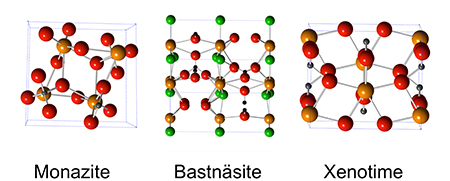
Geomicrobiology
The geomicrobiological work focusses on the easily leachable materials being used in work packages 2 and 4, but will also investigate other materials from the project that look promising from a bioleaching perspective. Microbes are involved in a variety of rock weathering processes and we aim to harness those that affect the mobility of REE and apply them to recovery of REE. We are working on identifying microbes that can leach REE from deposits, understanding the mechanisms by which they do this and developing new techniques for bioleaching. We are also looking at microorganisms’ natural ability to precipitate REE out of solution. Microorganisms have been shown to selectively precipitate REE out of solution, so we will also be looking at how microbes do this and identify organisms that can selectively recover particular economically desirable REEs.
Mineral characterisation
The objectives of SoS RARE are met from detailed and careful analysis of rock, mineral and soil specimens. The analytical methods used by the consortium are varied, reflecting the multidisciplinary approaches used. The instruments are spread across all the members of the consortium. Techniques include X-Ray Diffraction (XRD, for mineral identification and structural refinement), X-Ray Fluorescence (XRF, for rock, mineral and soil assay), Inductively Coupled Plasma Mass Spectrometry (ICPMS, used both for trace element concentrations in rocks and minerals, but also isotopic analysis), Fluid Inclusion analysis (including both homogenisation temperatures, microraman to determine mineral identity, and ICPMS to determine fluid composition), Luminescence Spectroscopy (excited by lasers, x-rays and electron beams) and Electron Microscopy (particularly Electron Probe MicroAnalysis to determine mineral compositions and QEMSCAN to provide automated rock images labelled for each mineral). The data acquired are used by consortium members to crack the questions posed in each work package.


